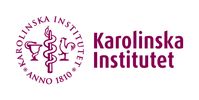Rising temperatures in Africa may increase perinatal deaths
Heatwaves in sub-Saharan Africa are predicted to become more common due to climate change. A new study by researchers at Karolinska Institutet and others, published in Nature Medicine, reveals a worrying correlation between high temperatures in the final week of pregnancy and an increased risk of stillbirth and early neonatal mortality.

“While temperatures are rising in sub-Saharan Africa, knowledge of how they affect pregnant women and their babies is scant,” says the study’s corresponding author Claudia Hanson, docent at the Department of Global Public Health, Karolinska Institutet, Sweden.
“Our results indicate that mother and newborn care in this region must be improved to ensure that hard-won improvements in reducing mortality are not lost to climate change,” adds Andrea Pembe, professor at the Department of Obstetrics and Gynaecology, Muhimbili University of Health and Allied Sciences, Tanzania.
The study included over 138,000 births at 16 hospitals in four countries in sub-Saharan Africa: Benin, Malawi, Tanzania and Uganda. The researchers analysed the association between high temperatures in the week before birth and perinatal mortality, which is to say a death just before, during, or within 24 hours after birth. High temperatures were defined as an increase in average weekly temperature for a typically warm week (between 22 and 28 °C depending on country, corresponding to the 75th percentile) to an exceptionally warm week (between 24 and 29 °C, corresponding to the 99th percentile).
Babies whose mothers had been exposed to high temperatures the week before childbirth had a 34 per cent higher risk of perinatal death, a risk that doubled during the six hottest months of the year. Unlike in many other countries, a large proportion – almost half – of all stillbirths occurred during labour.
“Our study shows that there is an urgent need to develop and implement interventions that protect pregnant women and their babies during heatwaves,” says co-lead author Jeroen de Bont, a postdoctoral researcher in Petter Ljungman’s research group at the Institute of Environmental Medicine, Karolinska Institutet.
In sub-analyses of heat-associated mortality by timing of death (before, during or after labour), the researchers observed trends towards increased stillbirths during labour, but not all estimates reached statistical significance.
The next phase of the research needs to focus on redesigning maternity wards to mitigate the effects of heat on pregnant women and staff, including using improved construction techniques such as ceiling insulation, and creating adjacent green areas, which can bring additional health benefits. The researchers will also be studying how heat affects other maternal and childbirth outcomes, and how it interacts with environmental factors such as air pollution.
The study was primarily financed by the EU’s Horizon 2020 research and innovation programme and was carried out in close collaboration with Makerere University, Uganda, Muhimbili University of Health and Allied Sciences, Tanzania, Centre de Recherche en Reproduction Humaine et en Démographie (CERRHUD), Benin, and Kamuzu University of Health Science, Malawi. The researchers report no conflicts of interest.
Facts: Every year, 1.9 million babies around the world die just before or during childbirth (stillbirth) and an additional 2.3 million die during the neonatal period (within the first 28 days of life). Sub-Saharan Africa is the region with the highest mortality rates. Reducing the stillbirth and neonatal mortality rates is one of the UN’s sustainable development goals and the principal objective of the WHO’s Every Newborn Action Plan initiative.
Publication
“A time-stratified, case-crossover study of heat exposure and perinatal mortality from 16 hospitals in sub-Saharan Africa”Claudia Hanson*, Jeroen de Bont* (joint first-authorship), Kristi Sidney Annerstedt, Maria del Rosario Alsina, Federica Nobile, Nathalie Roos, Peter Waiswa, Andrea Pembe, Jean-Paul Dossou, Effie Chipeta, Lenka Benova, Hussein Kidanto, Cherie Part, Massimo Stafoggia, Veronique Filippi, Petter Ljungman.
Nature Medicine, online 3 September 2024, doi: 10.1038/s41591-024-03245-7.
Kontakter
Claudia Hanson, senior lecturer, docent
Department of Global Public Health, Karolinska Institutet, Sweden
Phone: +46 734 043 567
Email: claudia.hanson@ki.se
Jeroen de Bont, postdoc
Institute of Environmental Medicine, Karolinska Institutet, Sweden
Phone: +46 700 777 443
Email: jeroen.de.bont@ki.se
Andrea Pembe, professor
Department of Obstetrics and Gynaecology, Muhimbili University of Health and Allied Sciences, Tanzania
Phone: +255 754 262 483
Email: andreapembe@yahoo.co.uk
Bilder


Press Office, Karolinska Institutet
Tel: +46 (0)8 524 860 77
pressinfo@ki.se
http://ki.se/pressroom
Följ Karolinska Institutet - English
Abonnera på våra pressmeddelanden. Endast mejladress behövs och den används bara här. Du kan avanmäla dig när som helst.
Senaste pressmeddelandena från Karolinska Institutet - English
Very early medication abortion is effective and safe6.11.2024 23:00:00 CET | Pressmeddelande
Clinics and hospitals currently defer medication abortion until ultrasound confirms a pregnancy inside the uterus. However, a large international study led by researchers from Karolinska Institutet now indicates that treatment can be equally effective and safe even before the sixth week of pregnancy. The study is published in The New England Journal of Medicine.
The 2024 Nobel Prize in Physiology or Medicine jointly to Victor Ambros and Gary Ruvkun7.10.2024 12:15:58 CEST | Press Release
The Nobel Assembly at Karolinska Institutet has today decided to award the 2024 Nobel Prize in Physiology or Medicine jointly to Victor Ambros and Gary Ruvkun for the discovery of microRNA and its role in post-transcriptional gene regulation.
Announcement of the Nobel Prize in Physiology or Medicine 202426.9.2024 17:00:00 CEST | Pressinbjudan
The Nobel Prize will be announced on Monday 7 October 2024 at 11.30 am (at the earliest).The announcement will be open only for media representatives who have been accredited in advance.
Breaking the trend: Skin cancer incidence in young adults declines9.9.2024 00:05:00 CEST | Pressmeddelande
The risk of skin cancer for adults under the age of 50 is now decreasing for the first time in Sweden, according to a study from Karolinska Institutet published in JAMA Dermatology.
New research explains differences between men's and women's immune systems4.9.2024 17:00:00 CEST | Pressmeddelande
In a recent study published in Nature, Swedish researchers demonstrate the role of sex hormones in regulating the immune system. This newfound knowledge explains differences between men and women and can be used to develop new immunological medications according to researchers.
I vårt pressrum kan du läsa de senaste pressmeddelandena, få tillgång till pressmaterial och hitta kontaktinformation.
Besök vårt pressrum